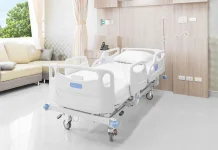IUVA Healthcare/UV Working Group
Troy Cowan, IUVA Healthcare/UV Working Group facilitator
A failure to communicate… It occurs when people use the same words but come from differing points of view (i.e., same words, different dictionaries). The resulting frustration from one side not understanding what is seemingly obvious to the other makes communication even more difficult. And the failure compounds…
In the GUV world, there is a similar “failure to communicate” with the new Federal Sector initiatives to improve Indoor Air Quality (IAQ). At a recent White House Summit on Indoor Air Quality1, several new programs were announced, designed to enhance IAQ, stem the tide of COVID-19 and mitigate the chances of a successor virus. Included were initiatives for:
- Clean Air in Buildings Challenge2, with a new WhiteHouse.gov/CleanIndoorAir website3 related to the challenge
- Urging school systems to improve ventilation and filtration with American Rescue Plan Elementary and Secondary School Emergency Relief funds4
- Soliciting feedback from experts, researchers, industry and the public on ways to better advance and promote IAQ actions
- Recognizing schools for IAQ improvements through the US Department of Energy’s Efficient and Healthy Schools Campaign5
With three speakers and 18 panelists talking almost four hours, the focus was on moving more outside air inside6 (assuming it’s “clean” air) and putting more HEPA filters inside with more fans to blow the air around7 (noisy, drafty).
One speaker did talk about inactivating the airborne bugs – Professor Shelly Miller brought up a very underutilized airborne disinfection technology: germicidal ultraviolet radiation (GUV).8 As she said, “…We use germicidal UV to kill microorganisms. It damages their DNA and RNA, so they can no longer replicate and infect you. We do it in water all the time… it also is very, very effective for keeping the air clear of infectious agents.”9
The GUV technology she mentioned exists and is relatively inexpensive to implement on a large scale. The barrier to its implementation, Miller pointed out, is that we’re too used to treating illnesses, not preventing them. “If you get TB, you go to the doctor and they give you antibiotics, and you don’t realize that you got TB by being exposed to somebody indoors,” said Miller.10
As Professor Miller noted, it makes more sense to install GUV in buildings and attack the pathogens as they come in.11 Wouldn’t it be better to prevent people from being exposed in the first place, so they don’t get sick and don’t have to be treated? We have the technology, so why isn’t it utilized?
Once again, there’s a failure to communicate – this time about the advantages of GUV, its safety and unique benefits in the disinfection spectrum of things. There are a few notable dictionary-caused “failures” that result in these disconnects – things we urge our federal experts to consider as they answer crucial questions about IAQ and the potential for disinfection with GUV.
Question: Is GUV really safe?
Does over-exposure to GUV cause acute, severe injuries?
Over-exposure to GUV can cause “…erythema (reddening of the skin) and photokeratitis (“welder’s flash” or “snow-blindness”)”… ranging from “a very mild irritation of the skin and eyes to a rather painful case of photokeratitis.”12 “The FDA has noted that these injuries heal within one to two days for the eyes13 and within a week for the skin,14 as “normal turnover of these cells soon erase the signs and symptoms of these effects.”15
And while it’s true GUV can cause acute injuries, “acute” doesn’t mean what you think. Medical dictionaries define “acute” as an injury that happens in a matter of minutes.16 GUV over-exposures do happen quickly, but they heal.17
“Severe” is another matter; it doesn’t fit. GUV over-exposures only impact the top layers (i.e., the superficial cells) of the skin and eye.18 Per the Cleveland Clinic, injuring only top layers rates as first-degree burn, which is a minor injury19; to be classified as moderate or severe would require damage to both the top and lower layers of the skin, where GUV doesn’t penetrate.20
GUV injuries: Are they acute (aka, quick)? Yes. Severe? No.
Does “UV” cause skin cancer and cataracts?
Yes, UV-A and UV-B found in sunlight do that,21 hence the UV index in the daily weather forecast.22 However, UV-C (aka, GUV) is not found in sunlight.23 It’s like washing hands in different temperatures of water: up to 110° F is hot, but the water won’t burn (like GUV); washing in 120° F and higher will hurt (as with UV-A and UV-B). Not all temperatures of water cause burns, just as not all wavelengths of UV cause cancer.
Isn’t UV “radiation,” and isn’t that bad?
Again, this is a dictionary issue. In scientific terms, “radiation” covers the whole electromagnetic spectrum, from heat waves to microwaves and then some.24 Even sunlight technically is solar “radiation.” The “bad” radiation is “ionizing radiation” produced by nuclear reactions, resulting in high-energy particles being thrown around, breaking up (ionizing) atoms and causing all kinds of problems.25 This is not UV, which – like sunlight – is non-ionizing radiation (i.e., no high-energy particles). It’s a totally different deal.
Question: Isn’t GUV just like chemical disinfectants? Doesn’t it…
Leave behind a poisonous residue that can make people sick?
No. GUV disinfects using energy, not poison.26 No residue.
Create “super-bugs” that build up resistance to GUV?
None, so far.27 That’s because of how GUV “disinfects” – it breaks up the pathogen’s reproductive cycle, essentially making it sterile, incapable of hatching more bugs.28 So, no superbugs are left behind to cause further infections.
Question: Are there other aspects of GUV we should know about?
GUV already is heavily utilized for water treatment and has been approved generically under the joint EPA/National Sanitary Foundation (NSF) performance criteria.29
These performance criteria and testing protocols were developed jointly by the EPA, academia and the water treatment industry with federal research support.30 Currently, there are no similar programs for GUV’s use against airborne microbials.
With these questions in mind, IUVA is planning a conference in Spring 2023, inviting industry, academia and the regulators (EPA, FDA, CDC, etc.) to a roundtable discussion on GUV regulations, standards and protocols currently in place, those under development, those being considered and their relative priorities for implementation.
Sometimes a failure to communicate simply is a failure to listen to each other. The next pandemic is around the corner, and we need to be prepared. Let’s talk; let’s listen; let’s collaborate. Let’s all work together. After all, it’s all about saving lives.
References
- White House, “Readout of the White House Summit on Improving Indoor Air Quality,” Oct. 12, 2022 (https://www.whitehouse.gov/briefing-room/statements-releases/2022/10/12/readout-of-the-white-house-summit-on-improving-indoor-air-quality/), last accessed 14 Nov 2022
- White House, “Clean Air in Buildings – Pledge Opportunity,” undated, (https://www.whitehouse.gov/cleanindoorair/), last accessed 14 Nov 2022
- White House, “CleanIndoorAir,” (http://www.whitehouse.gov/cleanindoorair), last accessed 14 Nov 2022
- White House, “Readout of the White House Summit on Improving Indoor Air Quality,” cited above
- DOE, “Efficient and Healthy Schools,” undated, (https://www.energy.gov/eere/buildings/efficient-and-healthy-schools), last accessed 14 Nov 2022
- EPA, “Clean Air in Buildings Challenge/Improving Indoor Air Quality,” EPA website, (https://www.epa.gov/indoor-air-quality-iaq/improving-indoor-air-quality), last updated 6 July 2022, last accessed 14 Nov 2022
- EPA, “Clean Air in Buildings Challenge/Indoor Air Quality Science and Technology,” EPA website, (https://www.epa.gov/indoor-air-quality-iaq/indoor-air-quality-science-and-technology), last updated 1 Aug 2022, last accessed 14 Nov 2022
- Michael Lock Swingen, “Professor Shelly Miller joins White House summit on indoor air quality,” University of Colorado Boulder/College of Engineering and Applied Science/Paul M. Rand Mechanical Engineering Dept. Website article, 1 Nov 2022 (https://www.colorado.edu/mechanical/2022/11/01/professor-shelly-miller-joins-white-house-summit-indoor-air-quality), last accessed 14 Nov 2022
- Ibid.
- Ibid.
- Ibid.
- D. Sliney, “Balancing the risk of eye irritation from UV-C with infection from bioaerosols,” Photochem Photobiol. 2013 Jul-Aug;89(4):770, (https://pubmed.ncbi.nlm.nih.gov/23668297/), last accessed 14 Nov. 2022
- FDA, “Ultraviolet (UV) Radiation,” FDA website, (https://www.fda.gov/radiation-emitting-products/tanning/ultraviolet-uv-radiation), last updated 19 Aug 2020, last accessed 14 Nov 2022
- Ibid.
- D. Sliney, “Balancing the risk of eye irritation from UV-C …,” cited above
- CDC, “Radiation Dictionary/Acute exposure,” CDC website, (https://www.cdc.gov/nceh/radiation/emergencies/glossary.htm), last reviewed 22 July 2021, last accessed 14 Nov 2022
- FDA, “Ultraviolet (UV) Radiation,” cited above
- D. Sliney, “Balancing the risk of eye irritation from UV-C …,” cited above
- Cleveland Clinic, “Health Library/Disease & Conditions/Burns,” Cleveland Clinic website (https://my.clevelandclinic.org/health/diseases/12063-burns), last reviewed 24 Aug 2020, last accessed 15 Nov 2022
- D. Sliney, “Balancing the risk of eye irritation from UV-C …,” cited above
- CDC, “UV Radiation,” CDC website, (https://www.cdc.gov/nceh/features/uv-radiation-safety/index.html), last updated 5 July 2022, last referenced 14 Nov 2022
- EPA, “UV Index Overview,” EPA website, (https://www.epa.gov/enviro/uv-index-overview), last updated 27 Oct. 2022, last accessed 14 Nov 2022
- FDA, “Ultraviolet (UV) Radiation,” cited above
- Ibid.
- CDC, “Radiation Dictionary/Ionizing Radiation,” CDC website, (https://www.cdc.gov/nceh/radiation/emergencies/glossary.htm), last reviewed 22 July 2021, last accessed 14 Nov 2022
- Illuminating Engineering Society (IES)/Photobiology Committee, “IES Committee Report: Germicidal Ultraviolet (GUV) – Frequently Asked Questions,” IES Committee Report CR-2-20-V1, 15 April 2020 (https://media.ies.org/docs/standards/IES-CR-2-20-V1-6d.pdf), last accessed 15 Nov 2022
- W. Kowalski, “Airborne Superbugs: Can Hospital-Acquired Infections Cause Community Epidemics?”, Consulting-Specifying Engineer Magazine, 1 Sept. 2007, (https://www.csemag.com/articles/airborne-superbugs-can-hospital-acquired-infections-cause-community-epidemics/), last accessed 15 Nov 2022
- IES/Photobiology Committee, “IES Committee Report: … GUV – Frequently Asked Questions,” cited above
- NSF, “Water and Wastewater Standards,” an NSF webpage (https://www.nsf.org/standards-development/standards-portfolio/water-wastewater-standards), undated, last accessed 15 Nov. 2022
- EPA, “History of the Clean Water Act,” EPA website (https://www.epa.gov/laws-regulations/history-clean-water-act), last updated 6 July 2022, last accessed 15 Nov 2022
The IUVA Healthcare/UV Working Group endeavors to promote the acceptance of UV disinfecting technologies as a credible, valued part of environmental management throughout the healthcare industry. In this column, the UV community will be updated on these efforts and the latest information on UV technology as it pertains to the healthcare industry.
Contact: Troy Cowan, troy@visionbasedconsulting.us






